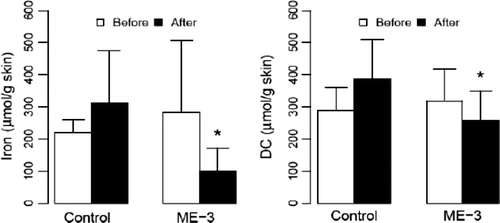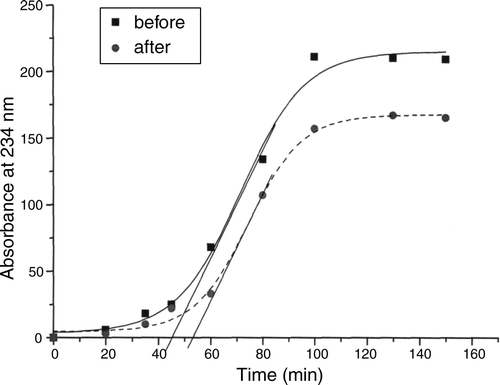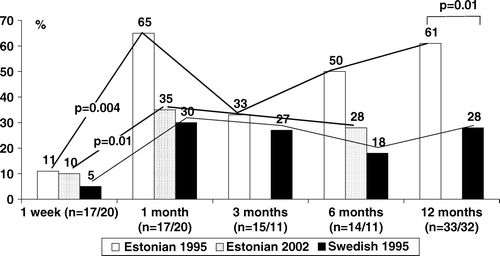Figures & data
Table II. Evidence-based probiotic lactobacilli according to randomized double-blind placebo-controlled studies (adapted from 68,69).
Table III. Production of short chain fatty acids (SCFAs), ethanol, polyamines, conjugated linoleic acid (CLA) and nitric oxide (NO) by L. fermentum ME-3 DSM 14241 in comparison with Lactobacillus plantarum DSM 21380.
Table IV. Antioxidativity-related properties and effects of strain ME-3.
Table V. Indices of oxidative stress (with standard deviations) in the ileum mucosa in mice challenged with S. Typhimurium and treated with ofloxacin and/or the probiotic L. fermentum ME-3.
Table VI. Improvement of OxS-related indices of blood sera in the synbiotic DBRP crossover study in healthy volunteers Citation[167].
Table VII. Clinical and biochemical evaluations of stroke patients: parameters at the baseline (before) and after an application period (after) by means of SSS and FIM scale and biochemical indices (mean±SED) Citation[162].
![Figure 2. Lactobacillus fermentum ME-3 (DSM 14241) Citation[118], Citation[119]. (a) Light microscopy, Gram stain, magnification×1000. (b) Fluorescent in situ hybridization (FISH). Probe: Lab 158, Lactobacilli + enterococci according to Franks et al. Citation[41].](/cms/asset/232e941a-6c0b-47e9-90a9-712f3a9603f3/zmeh_a_381726_f0002_b.gif)
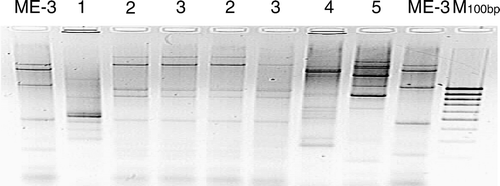
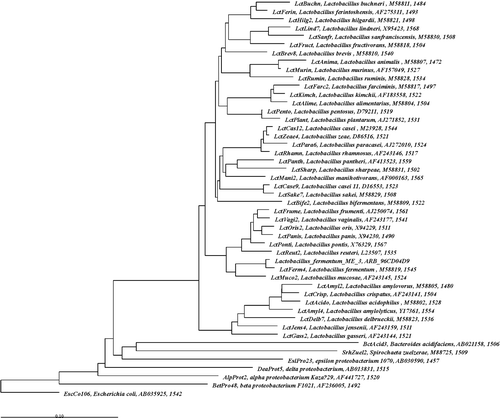
![Figure 5. Gas chromatography of polyamines of L. fermentum ME-3 in the decarboxylation medium with ornithine Citation[123].](/cms/asset/6b8ff83d-24c9-464a-adc2-b42bfa3eeff2/zmeh_a_381726_f0005_b.gif)
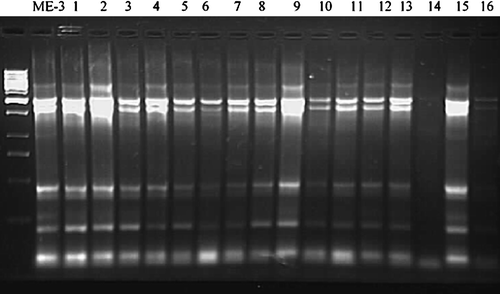
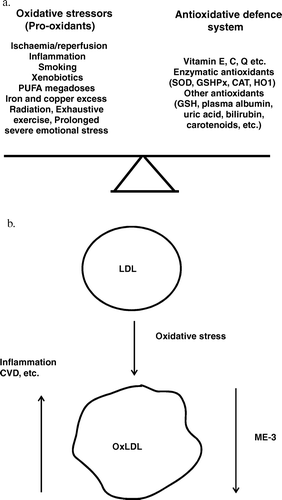
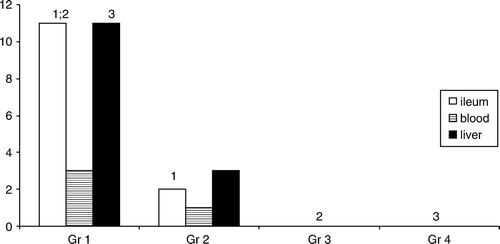
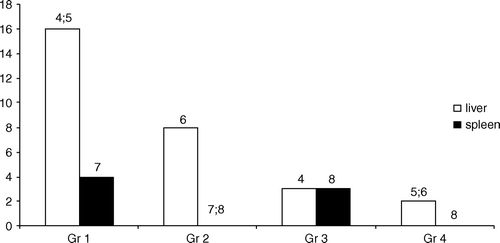
![Figure 10. Increase of total faecal counts of lactobacilli in healthy volunteers consuming strain ME-3 in fermented goat milk and in the DBRP probiotic capsule efficacy trial Citation[118]. *p < 0.005 difference from pretreatment values; ‡p < 0.01 difference between ME-3 and control treatments.](/cms/asset/1116ad06-53f9-4f83-a812-a25f085f47d7/zmeh_a_381726_f0010_b.gif)
